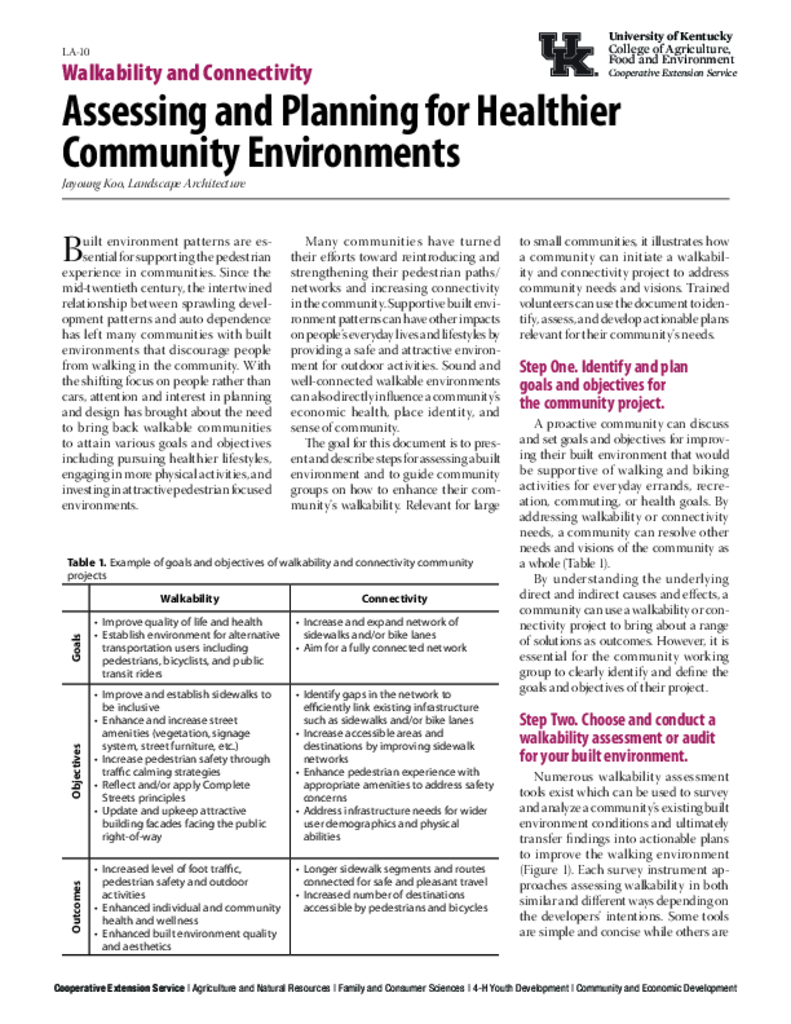Walkability and Connectivity: Planning for Enhancing Walkability and Connectivity
Walkability and Connectivity: Planning for Enhancing Walkability and Connectivity
Abstract
Built environment patterns are essential for supporting the pedestrian experience in communities for health, wellness and safety. Since the mid-20th century, the intertwined relationship between sprawling development patterns and auto dependence has left many communities with built environments that discourage people from walking in the community. With shifting focus on people rather than cars, attention and interest in planning and design has brought about the need to bring back walkable communities for various goals and objectives including pursuing healthy lifestyles, engaging in more physical activities and investing in attractive pedestrian focused environments. Many communities have turned their efforts toward reintroducing and strengthening their pedestrian paths/networks and increasing connectivity in the community. Supportive built environment patterns can have other impacts on people's everyday lives and lifestyles such as providing for a safe and attractive environment for outdoor activities. Furthermore, sound and well-connected walkable environments can also directly influence a community's economic health, place identity, and sense of community.
Core Details
Publication Date
December 13, 2017
Categorical Details
© 2025 University of Kentucky, Martin-Gatton College of Agriculture, Food and Environment

